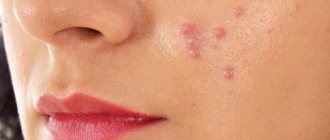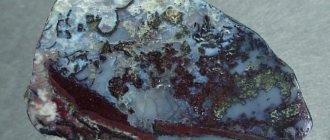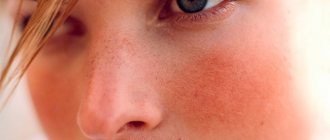What is barley?
Before I tell you what causes barley to appear before our eyes, we should tell you what this disease is.
Barley is a purulent inflammation of the sebaceous gland or hair follicle of the eyelash. This disease begins to develop with local redness, as well as slight swelling in the area of one or more eyelashes. The inflammatory focus appears suddenly and is expressed by noticeable pain. Approximately on the 3rd day after the onset of the disease, the tip of the inflamed part becomes yellow or the so-called head. On the 4th day, this abscess opens and the pus pours out. At the same time, the previously disturbing pain gradually subsides.
If inflammation occurs in the area of the outer corner of the optic organ, the patient experiences severe swelling. This happens due to impaired lymph circulation.
So why does stye appear on the eyes? Experts say that this disease is a sign of a deficiency in the human immune system. It should be treated by an ophthalmologist or ophthalmologist.
Barley stages
Barley goes through the following stages of development:
- Infiltrative stage.
At this time, a person experiences itching and burning in the eyelid area, it becomes swollen. This stage lasts no more than 3 days.
- Stage of suppuration.
If barley does not resolve, then an abscess forms on the eyelid. It is round, transparent, filled with whitish contents.
- Breakthrough stage.
The capsule with pus either ruptures on its own or is opened by a doctor. The pus comes out and may ooze for several more days.
- Healing stage.
A crust forms over the stye, under which the skin regenerates.
Reasons for development
Why does stye appear on the eye? It is impossible to answer this question unequivocally, since there are a huge number of reasons for the development of such a disease. Let's look at the main ones right now.
- What causes stye to appear on the eyes? Most often, this disease is a consequence or complication of other diseases of the visual organs or eyelids. Therefore, experts recommend regularly contacting ophthalmologists and undergoing all necessary examinations.
- Failure to comply with banal rules of personal hygiene. The question of why stye often appears on the eye is often asked by people who constantly scratch or touch their face (and eyes, in particular) with dirty hands. As a result of such actions, the skin of the eyelids is quickly damaged, and various viruses and bacteria easily penetrate through it, which, in fact, cause inflammation.
- Colds and hypothermia (especially frequent and severe) can also cause stye on the eye.
- Few people know, but the ailment in question can arise due to digestive problems, as well as diseases of the digestive tract.
- Stye on the eye very often becomes inflamed in those who have recently suffered a serious illness and are now in a period of rehabilitation and recovery after long-term treatment.
- Constant nervous tension and frequent stress also contribute to the development of the inflammatory process on the eyelids.
- Barley can form due to negative environmental influences, including urban smog, dust, smoke, harmful fumes and other things.
- Impaired metabolism, as well as diseases associated with it, negatively affect a person’s immunity and can easily disrupt its functioning, which is the reason for the formation of barley.
- The disease in question often occurs in patients suffering from diabetes.
Causes and treatment
There are many reasons for the appearance of barley, the main ones are:
- weakened immune system, hypothermia,
- vitamin deficiency (traditionally occurs in January-March),
- neglect of the rules of hygiene of the eyes and eyelids with eyelashes,
- diseases of the intestines, stomach, pancreas and endocrine diseases.
To the question “why does barley appear?” There is another answer - bacterial infection . Almost always this is Staphylococcus aureus, a permanent carrier of which is a third of the world's population. This bacterium persists on the skin and mucous membranes, so it spreads easily.
Many people wonder whether barley is contagious? This inflammation is absolutely not dangerous for others, provided basic hygiene . Simply put, if you wipe your eyes with the same handkerchief as a person suffering from stye, then there is a risk of infection.
This risk usually occurs in children, especially preschool age. They do not yet understand the rules of personal hygiene, so they are more likely to suffer from bacterial infections. A similar situation is possible when using cosmetics from an infected person.
There are several factors that increase the risk of developing the disease:
- weakened immune system;
- diabetes;
- hypothermia of the body;
- chronic gastrointestinal diseases;
- problems with the endocrine system;
- avitaminosis;
- demodicosis (parasitization of acne mites);
- inflammatory eye diseases.
A situation is possible in which stye appears on two eyes at once or on one eyelid in several places. In this case, you should definitely consult a doctor and determine the nature of the disease.
How to treat inflammation in order to quickly recover, and can you do it at home?
Main symptoms
How does stye appear on the eye? The signs of this disease cannot be ignored. First, the patient experiences pain in the eye area, as well as headaches. Also, sometimes a person's body temperature rises. In this case, a rather painful point appears at the very edge of the eyelid, which then swells.
The site of inflammation is often accompanied by itching, redness and swelling. As soon as the abscess matures and a yellow head forms on it, it opens. In this case, not only pus is released, but also particles of dead tissue.
It should be noted that you cannot squeeze out the abscess yourself. Otherwise, it can lead to serious consequences.
Very often, unripe barley simply disappears without any opening. This is a completely normal phenomenon, especially for those patients who began to strengthen their immunity in time and made every effort to treat inflammation.
Prevention
The main preventive measure for such inflammations is hygiene and the use of certain products individually:
- Girls should use only their own cosmetics and not give it to anyone - even if a person has no signs of inflammation, he can be a simple carrier of unnecessary bacteria;
- You should never touch your eyes with dirty hands or wipe them with someone else’s handkerchief or napkin;
- Any eye or other infections should always be treated completely. Otherwise, a relapse and a lot of unpleasant complications are possible.
With the correct and timely measures taken, barley goes away quickly enough and without consequences. Of course, this phenomenon is aesthetically unpleasant, but it can happen to anyone.
If barley is detected, of course, you should consult a doctor. This is a sign that an infection has entered the body, or the body is experiencing vitamin deficiency or other unpleasant ailments. Only a doctor will be able to determine the true causes of the disease; independent treatment can complicate the course of the disease and worsen the situation.
If barley recurs, then you need to contact an immunologist, because the reappearance of the disease after treatment indicates that the problem lies in the immune system and the body’s lack of vitamins and minerals.
Read also: How to choose the right contact lenses
Types of barley
Now you know why stye appears on the eye. The signs that many people believe in do not work in this case. After all, this disease has specific causes of development. As soon as they are eliminated, the inflammation in the eye will immediately disappear.
In modern medicine, it is customary to distinguish two forms of the disease in question. They depend on which part of the eye is affected:
- External stye is observed if the patient has inflammation of either the hair follicle or the sebaceous gland.
- Internal stye develops due to inflammation of the meibomian gland. Usually this disease manifests itself more clearly and painfully.
Prevention of stye
Prevention of barley includes compliance with the following preventive recommendations:
- Follow the rules of personal hygiene - at a minimum, do not touch your eyes and other parts of your face with unwashed hands;
- In food, give preference to foods enriched with vitamins and microelements - fresh vegetables, fruits and other representatives of the plant world;
- In the autumn-winter-spring period, do not neglect additional intake of vitamin complexes, especially pay attention to vitamins and group B;
- Avoid hypothermia;
- Avoid stress, or learn to overcome it without harm to your health, or, as a last resort, change your job;
- Maintain a work/rest/sleep schedule, get enough sleep;
- Do not leave various diseases to chance, especially those of an infectious nature, so that they do not become chronic;
- Give up alcohol, quit smoking;
- Do not use medications at your own discretion, but try to consult with your doctors first.
Complications
We talked above about why barley appears on the eye. We also described the symptoms of this disease and the process of its development.
A common external stye begins with a slight redness and itching sensation. Within 2-4 days it matures, and purulent contents come out of it. At the same time, the patient begins to feel much better.
However, with domestic barley the situation is more complicated. When such an abscess ruptures, its contents can easily infect the mucous membrane of the optic organ, especially if there are small wounds in it. That is why experts do not recommend opening the stye yourself, since the existing infection can easily spread and lead to disastrous consequences.
Also, a complication of this disease is often blockage of the meibomian glands. In this case, the barley encapsulates, resulting in the formation of a chalazion. This kind of abscess is removed only through surgical methods.
To avoid the development of such troubles, treatment for barley should begin immediately after the first symptoms appear. By the way, during the treatment of this disease, it is forbidden to wear contact lenses or use cosmetics.
Barley classification
Typically, barley in adults and children is divided into external and internal, based on the location of the inflammatory process.
Outer.
It is characterized by the appearance of an abscess on the outside of the upper or lower eyelid with a white abscess at the top. Over time, the abscess matures and opens. After this, tissue regeneration begins: most often, within a few days, not a trace of inflammation remains.
It usually affects the glands of Zeiss and Moll. Zeiss' sebaceous glands are located in pairs around each follicle, into which they secrete their secretion. Moll's sweat glands are located there; their function is still not fully understood.
Features of external barley:
- More common than internal
- The cause of the appearance is infection of the eyelash follicles or glands that are located at the edge of the eyelids
- The infection process spreads to nearby tissues
- There is a risk of a wound or abscess at the extreme border of the eyelid.
- Location: outer, visible surface of the eyelid
Primary signs:
- Eyelid hyperemia (redness)
- Swelling
- Pain, tingling in the affected area
- Tearing
The onset of the disease can be almost asymptomatic. At the height of inflammation, the infiltrate bursts, and the purulent contents come out for several more days. After this, the pain subsides and the healing process begins.
Interior.
Peculiarities:
- Localization: lobules of meibomian glands located in the cartilaginous plate of the eyelid (their secretion is involved in the formation of the lipid layer of the tear film covering the ocular surface and the inside of the eyelids)
- Inflammation is located inside the eyelid
- More painful course
- Easy to diagnose
Symptoms:
- Pain
- Edema
- Increased lacrimation
- Sensation of a foreign body in the eye
On the inside of the eyelid you can notice a hyperemic area with a yellowish center. Internal stye is usually more painful than external stye, and it takes longer to ripen.
The ripened internal barley opens into the conjunctival sac. If the course of the disease is unfavorable, a chalazion may form at the site of the stye - a chronic inflammation of the cartilage and gland, in which the gland duct is clogged and the secretion cannot come out. A chalazion looks like a dense, hyperemic ball the size of a millet grain to a pea. This condition requires mandatory treatment under the supervision of an ophthalmologist.
In rare cases, the formation of stye - both internal and external - may be accompanied by general malaise, fever, aching joints, muscle and headache, and enlarged lymph nodes located next to the affected eye. Typically, such a reaction of the body indicates a complicated course of the disease. If you notice the first symptoms, you should immediately consult a doctor.
Stye appeared on the eye: how to treat?
If the signs of such inflammation are insignificant, and the patient’s condition does not worsen over time, then barley treatment may not be carried out. You just need to monitor your well-being, and also wait for the abscess to mature and then open.
Often the head of the stye does not open, and the inflammation goes away on its own. Although there are also cases when everything is much more complicated. In this situation, it is necessary to take urgent and effective measures. Treatment of barley must be competent and consistent.
Medications
What to do if stye appears on the eye? There are many drugs available in pharmacies that can cure this inflammatory disease. They usually come in the form of eye ointments or drops.
Antibacterial and anti-inflammatory agents are well suited for the treatment of stye. Very often, patients are prescribed medications such as tetracycline, hydrocortisone, erythromycin ointment and others.
As for drops, many ophthalmologists recommend using the following: Floxal, Albucid, Gentamicin, Tobrex, and so on.
It should be especially noted that these products should be used only after consultation with an ophthalmologist. Self-medication in this case is unacceptable.
Why does stye appear on the eye - folk signs
Popular signs say that stye appears on the eye due to envy, anger and discontent. In ancient times, it was believed that it was enough to envy a person greatly, to stare at his happiness and good fortune, and higher powers would certainly punish the envious person. A stye appears on the eye, which means the omen is working. You can even be envious with “white envy”.
Control over your emotions and desires is what is necessary if a lump appears on your eye. In ancient times, people believed in simple but understandable truths. And it was believed that the body, like a litmus test, reveals both bad and good.
The following folk sign about stye on the eye indicates dissatisfaction with life and others. It’s not for nothing that barley appears on the eye; the way people look at this world and what they see is interaction. Perhaps it's time to stop seeing only the bad and using negative connotations.
There is also an opposite interpretation: barley appears on the eye - this is a sign that speaks of cleansing. Perhaps a series of tragic and difficult events have happened in your life recently. Karma was full, and barley is a kind of cleansing of the body and soul from excess! According to this interpretation, unpleasant discomfort should be rejoiced. This is not entirely true; you should review the last past period and analyze it. But you need to do this honestly and alone with yourself. Then it will be easier to determine the folk sign about barley and guess the reason for its appearance.
A stye on the eye can be a sign of magic. In a close or not so close environment, a person could appear who wishes evil. It’s not enough to just wish bad things; you need to have certain skills and use conspiracies to make your plans come true. It's time to think about who could do something like this. Only silent observations will help. Envious people and enemies who use magic very often give themselves away by their behavior.
Sign if stye appears on the right eye
A stye on the right eye is both good and bad. The good thing is that the ill-wisher who caused the damage did not achieve his goal and the karmic shell remained intact. The plot was made, but it did not work. In order to become an object of damage, it is not necessary to communicate with the enemy in person. It is enough to touch an unfamiliar object with your hand. Therefore, people who are involved in the magical world advise not to touch the trash near the door, trinkets found on the road, and especially valuable things. Strange and unidentified objects at the door should be removed with gloves and first sprinkled with holy water. If it is not there, just read the prayer.
Sign if stye appears on the left eye
A stye on the left eye has more negative consequences. This sign is a sign and signal to action. A person who wishes evil intends to complete what he started. This could be a knowledgeable magician or a representative of a strong family with powerful energy. The first thing to do is to conduct a complete inspection of the house for unfamiliar objects. The task is not easy, because the enchanted elements can be made in the form of small things:
- needles, pins, pieces of paper;
- coins, unidentified bills;
- gifts and presents that I didn’t want to accept.
Damage can be caused to any object. But he will be in the house. Because a sign in the form of barley on the left eye indicates that the envious person has gotten very close.
Important! You can't wish evil in return. This will only worsen the situation that the sign warns about. Evil in response to evil is not a solution, but a vicious circle and a real test for energy
Evil in response to evil is not a solution, but a vicious circle and a real test for energy.
If an item is found, it must be packed in a bag or package and burned. This is where the protection just begins
It is important to protect your home with the help of rituals and conspiracies. Call the priest or the witch? Everyone decides for themselves
The hardest thing is to remember all the last visitors and guess who could have decided to damage it. It is even more difficult to recognize an ill-wisher in a loved one, from whom it would be difficult to expect betrayal.
Warming up the lesion
Often, stye disappears from the eye or breaks out faster if it is thoroughly warmed. However, such a procedure can only be used if the abscess has not yet fully matured.
Manipulations with warm compresses help to speed up the maturation of the abscess and promote the rapid removal of its contents. It must be remembered that the heat must be dry, that is, wet lotions are unacceptable.
Thus, to warm up the lesion, you can use heated salt, cereals, sand, as well as unpeeled boiled eggs. These products should be wrapped in a scarf or placed in a cloth bag.
It is advisable to warm up the stye on the eye for 10-13 minutes several times a day. In the event that the abscess has not matured, the doctor may prescribe UHF therapy.
Risk group
Research has made it possible to identify several subgroups that are more often affected by staphylococcus than others:
- Girls use decorative cosmetics of poor quality or foreign ones, which transmit the pathogen. The risk of disease increases due to daily makeup removal procedures.
- Children under 3 years of age - the problem is associated with insufficient development of the immune system. In other cases, the trigger is overheating of the body and blockage of the sebaceous glands.
- Children from 3 to 18 years old become infected due to their unwillingness to follow hygiene rules. The infection from dirty hands is transferred to the visual area.
- Patients with myopia - wearing contact lenses, their improper use or expired expiration dates lead to activation of the inflammatory process.
Barley occurs in old age and in people leading a sedentary lifestyle. Constant work at the computer also contributes to the involuntary introduction of bacteria.
Surgery
Why does stye appear on the eye of a child or adult? The answer to this question was indicated above.
The treatment for the disease in question is very simple. But if the abscess has matured for a long time, but has not opened, specialists resort to surgical intervention. During the operation, the doctor makes a small incision or puncture using sterile instruments, and after that he performs drainage, that is, removes all the pus.
Having completed a simple and uncomplicated procedure, the surface of the affected area is treated with antiseptics. Such manipulations are carried out over the next few days.
Treatment
How to get rid of stye on the eye, and is stye contagious or not?
With minor inflammation and normal condition and well-being, treatment is not necessary. One has only to observe this phenomenon. There are situations when the head does not ripen, and after severe redness and swelling, the inflammation goes away on its own. In other cases, urgent rescue measures have to be taken.
Treatment of the source of inflammation should be regular; for this purpose, antiseptic agents are used, among them: iodine, brilliant green or calendula tincture with alcohol. Use a cotton swab to carefully clean the danger zone several times a day.
By medication
Pharmacies offer quite a lot of medications that can cure inflammation of the sebaceous glands on the eyelid, including eye drops, ointments and gels. Antibacterial and anti-inflammatory drugs are used in treatment, such as:
- Tetracycline ointment.
- Hydrocortisone drugs.
- Erythromycin ointment.
How to apply ointment to eyes
Cedi drops are most often used:
- Phloxal,
- Albucid,
- Tobrex,
- Gentamicin.
Another antimicrobial agent is known, which belongs to the group of 2nd generation fluoroquinolones.
This is Ofloxacin. It can be in the form of an ointment or as eye drops. But without consulting an ophthalmologist, you should not use any of their medications on your own. In this case, independent actions are completely excluded. Well, we should keep silent about well-known folk methods, since they have nothing to do with correct and civilized treatment. With good heating, barley can swell and burst faster. Warming procedures are prescribed only when the abscess has not fully matured. Warm compresses also speed up the process, but they should only be dry. You can use salt, sand or cereal heated in a frying pan, or boiled eggs. They are placed in a handkerchief or napkin and applied to the sore spot.
Warming up takes no more than 15 minutes. The procedure can be done up to several times throughout the day.
Doctors sometimes prescribe UHF procedures.
Surgically
In those rare moments when the abscess “stays too long” but does not swell, surgery is prescribed. The surgeon makes an incision and drains the pus. After completion of the manipulation, the sore spot is treated with antiseptics until the wound is completely healed.
Folk remedies
This approach is possible, as long as it is not limited to spitting in the eye.
But jokes aside. Indeed, there are folk methods that can help with this disease. We will now offer several recipes and ways to use them:
- Treatment with aloe. Cut off the leaves of the plant and pour hot boiling water over it and leave for 30 minutes. Apply the infusion to the eyelid using a cotton pad up to several times a day.
- You can also wipe the affected area with strong tea leaves throughout the day.
- An infusion of chamomile helps relieve pain, especially with large localized inflammation. Infuse the dry mixture in boiling water and use it as a compress for the eyelids.
Why do the eyelids swell above the eyes?
This article will tell you why Okutiarz drops are prescribed.
Antibacterial and antiviral eye drops Okoferon https://eyesdocs.ru/medicinaoperacii/lekarstva/kak-primenyat-glaznye-kapli-okoferon.html
Traditional methods
Some people get rid of stye by resorting to unconventional methods. Let's introduce a few popular methods right now:
- Pour a glass of boiling water over a few leaves of fresh aloe, cover with a lid and leave for half an hour. The resulting infusion must be filtered, soak a cotton pad in it and treat the entire eyelid with it. It is advisable to carry out such procedures 4 times a day.
- Soak a cotton pad in strong black tea and wipe it over the entire affected area (up to 5 times a day).
- A large spoonful of dry chamomile leaves must be poured with one glass of boiling water and left for an hour. You should wipe your eyelid with this infusion three times a day.
Treatment at home
Therapy may well be either traditional or medicinal.
If we talk about folk methods, then everything is simple. Just don’t spit on the barley, it won’t go away.
It is better to apply warm compresses to the affected eye. To do this, you need to take a towel or terry cloth napkins, moisten them with warm water and apply to the barley.
It is necessary that the towel is not too hot, so as not to burn the skin, and not too cool, because a warm compress is used to disperse the pus.
A few more tips:
- The surface around the barley needs to be disinfected. It is best to do this with baby shampoo diluted with water. Instead, you can use a tea compress. To do this, you need to brew tea bags or loose leaf tea, cool the broth to room temperature and apply a cotton pad soaked in tea to the barley 3-4 days a day. You can immediately apply a tea bag, this procedure can also relieve tension from the eyes.
Eye lotions can be made not only from tea and water, but also from other herbs and plants that are sold in every pharmacy. It could be chamomile, calendula, plantain.
The recipe is always the same: take three tablespoons of the product, pour a glass of boiling water over it, let it stand for 2-3 hours and let it cool to room temperature. Then you should soak a cotton swab in the resulting tincture and put it on your eyes for 5 minutes, repeating the procedure 3 times a day.
The liquid should absolutely not be allowed to burn the eye, otherwise the eyeball may be damaged.











